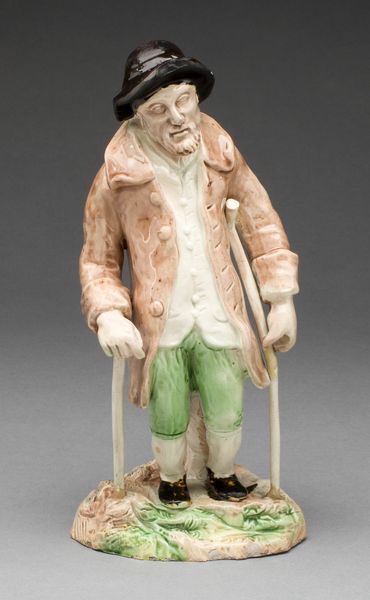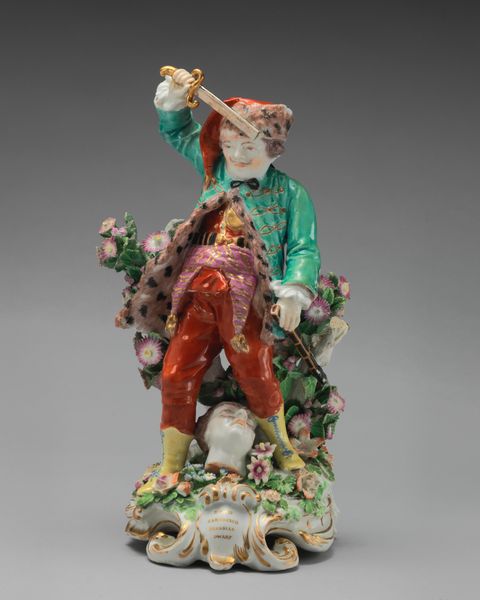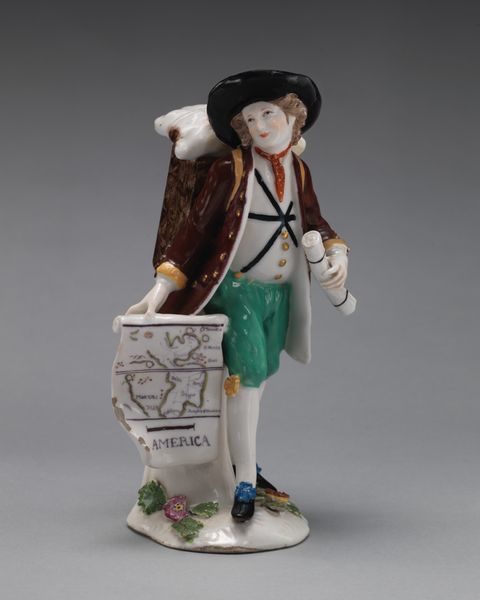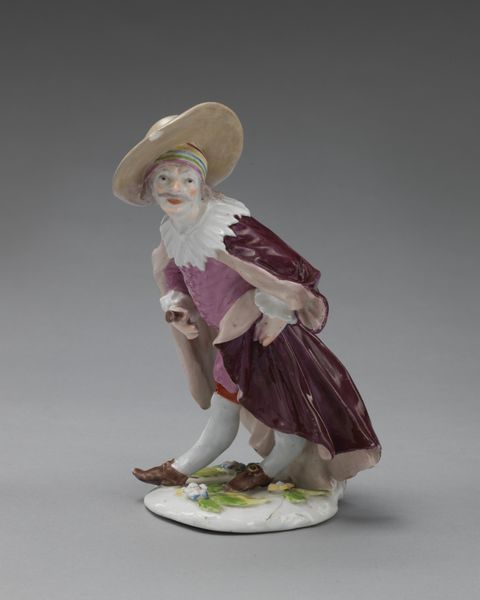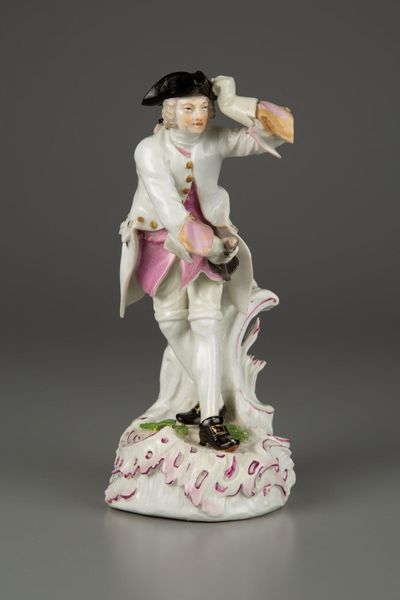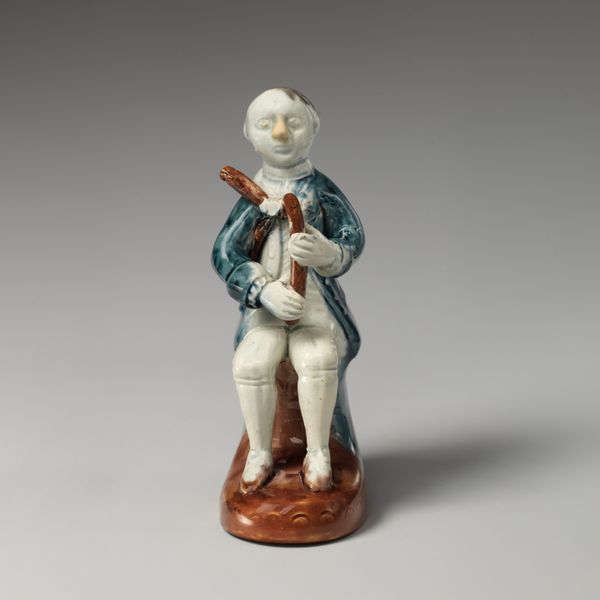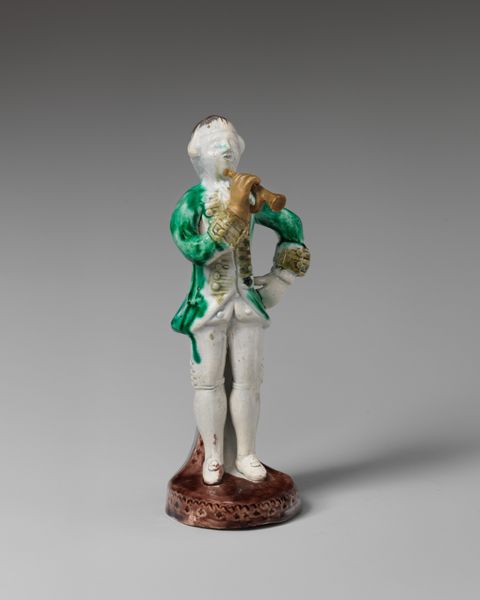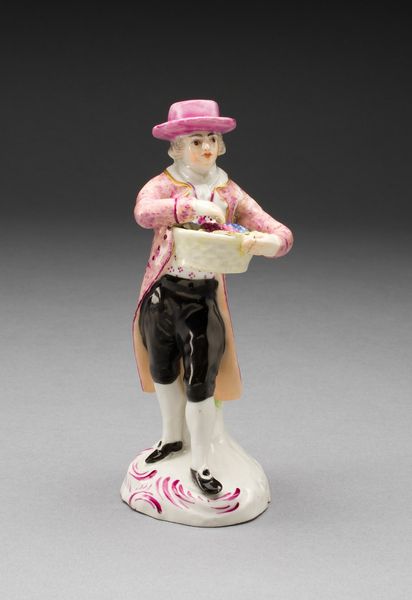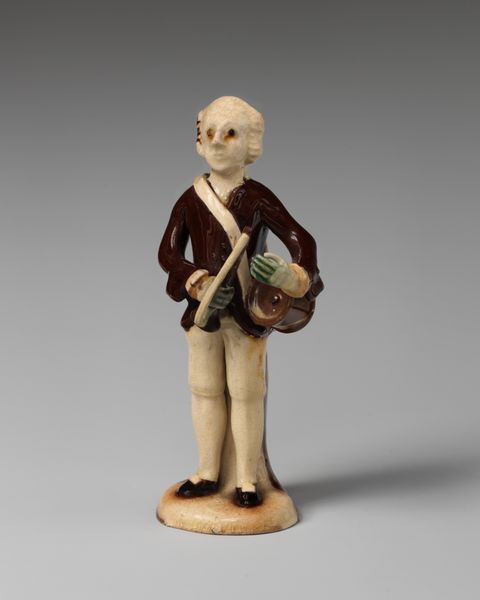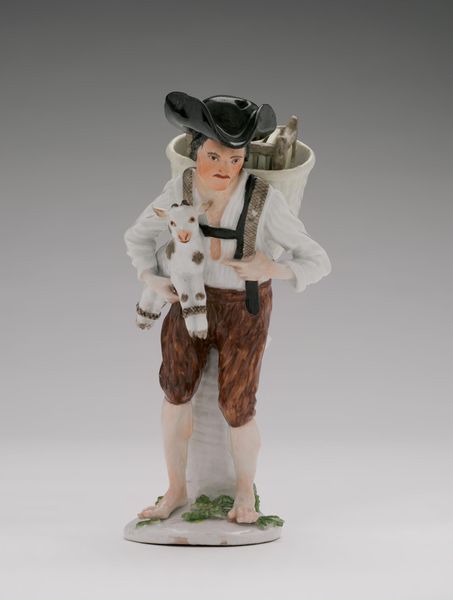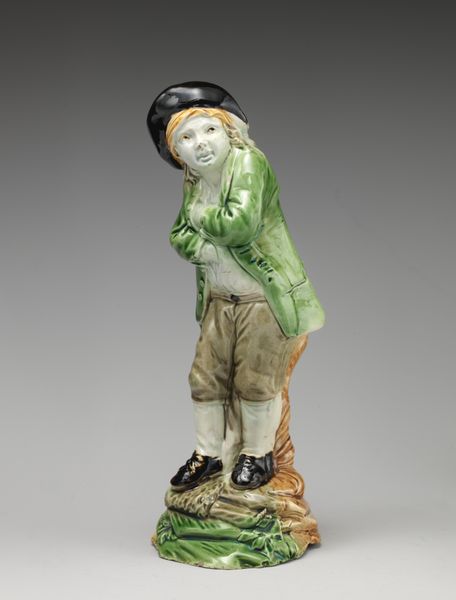
ceramic, porcelain, sculpture
#
ceramic
#
porcelain
#
figuration
#
sculpture
#
france
#
genre-painting
#
decorative-art
#
miniature
#
rococo
Dimensions: H. 11.4 cm (4 1/2 in.)
Copyright: Public Domain
Curator: Standing before us, we have a piece titled "Figure of a Butcher," dating back to around 1765. This delicate porcelain sculpture is credited to Jean-Jacques Louis, and currently resides here at The Art Institute of Chicago. Editor: He looks…burdened. Despite the miniature scale, there's something rather poignant in the droop of his shoulders under that large, seemingly heavy, piece of meat. And that vibrant yellow waistcoat – a stark contrast. Curator: Indeed. Let's unpack this a bit. The Rococo period in France saw a rise in these small-scale genre scenes. Think about the burgeoning middle class; suddenly, there was a market for decorative objects that celebrated everyday life, albeit in a rather idealized manner. It speaks volumes about class and the political role of the decorative arts. Editor: Ah, the idyllic shepherdess...but with cleavers. I see what you mean. The intersectionality of class performance is apparent here. This is not just any butcher; he's a romanticized figure, elevated in porcelain. There's almost an absurd dialogue here with social constructs. Does he truly embody hard labor when he's immortalized in a fragile, ornamented state? Curator: Precisely! And the choice of porcelain is not arbitrary. It was expensive, difficult to produce, a symbol of wealth and refined taste. So we're seeing the laboring classes repackaged for consumption – both literally and figuratively – by the aristocracy and burgeoning bourgeoisie. Editor: It feels incredibly fraught. The soft colors, that slight smile, they try to domesticate a profession inextricably linked to death. The butcher as decorative art... I'm curious, in the Rococo era, how this particular representation impacts not only societal views towards gender and occupation, but also towards foodways themselves? Curator: That is a vital question to explore! It forces us to interrogate whose realities were reflected, and more importantly, whose were intentionally obscured. The aesthetic pleasure here could simultaneously naturalize and distance viewers from the visceral reality of animal slaughter. Editor: A delicate dance of obfuscation. Thank you. Curator: Of course, considering this sculpture reveals so much more beneath its glossy surface, I will have to reflect on the broader forces which shaped art production in that era.
Comments
No comments
Be the first to comment and join the conversation on the ultimate creative platform.

